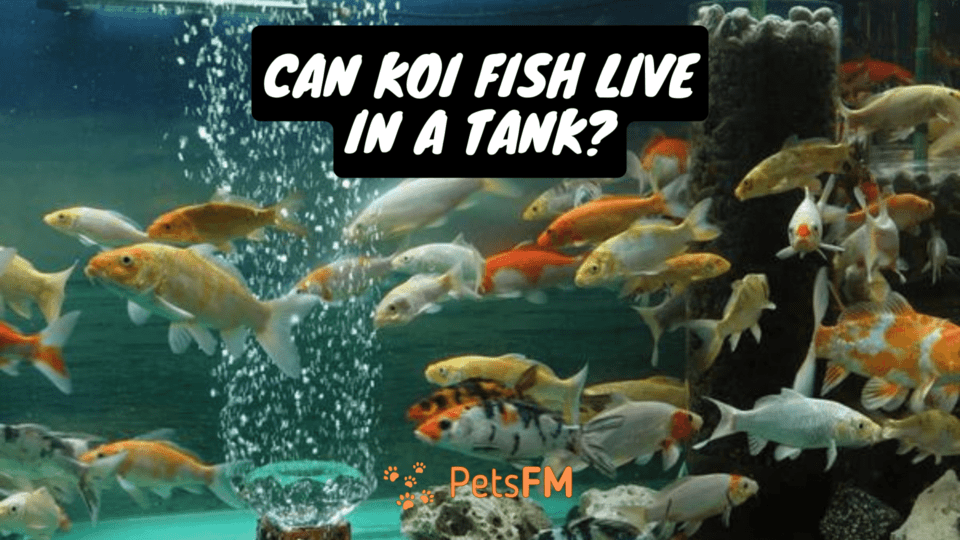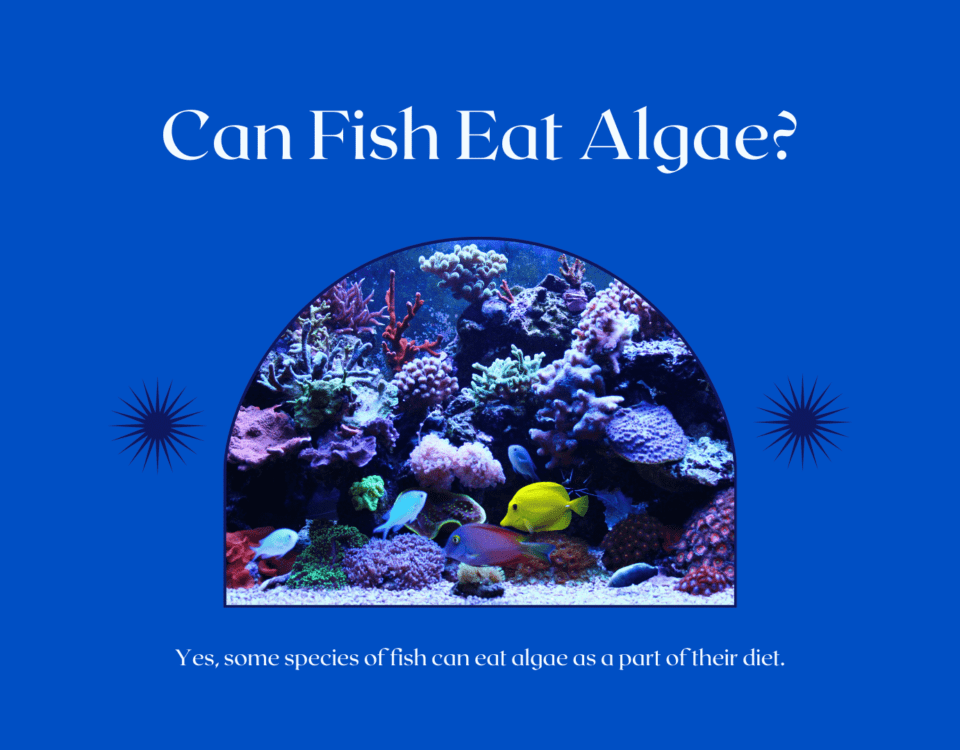


What happens when a cat eats snake? Things you should know
February 25, 2024


Can a fish actually drown? Let’s find out!
February 25, 2024We have discussed before if Fish are Good Pets, in this article, we’ll discuss if Koi fish can live in a tank. Koi fish have long been cherished for bringing a touch of sophistication to one’s living spaces. Typically associated with sprawling outdoor ponds in their traditional Japanese setting, these sizable fish are known for their potential to reach impressive lengths.
Keeping koi fish in an aquarium at home is feasible. Although Koi are capable of significant growth, their size will adapt to the confines of their environment. Thus, while keeping koi in a home aquarium, they will adjust to the tank size provided, though opting for a larger tank is advisable.
Koi fish are more than just visually appealing; maintaining them as pets requires attention to several other needs. If you’re curious to learn more about the care and keeping of koi fish in a domestic setting, continue with this article!
The Koi Fish
With their vibrant and shiny colors and graceful movements, Koi fish symbolize beauty, wonder, and serenity in various cultures for centuries.
Originating from East Asia, koi fish have been bred for their aesthetic qualities for thousands of years, particularly in Japan, where they are most famously associated.
They are not just ordinary fish; they carry deep cultural significance, representing love, friendship, perseverance, and good fortune. The practice of keeping Koi has transcended borders, making them beloved by enthusiasts worldwide.
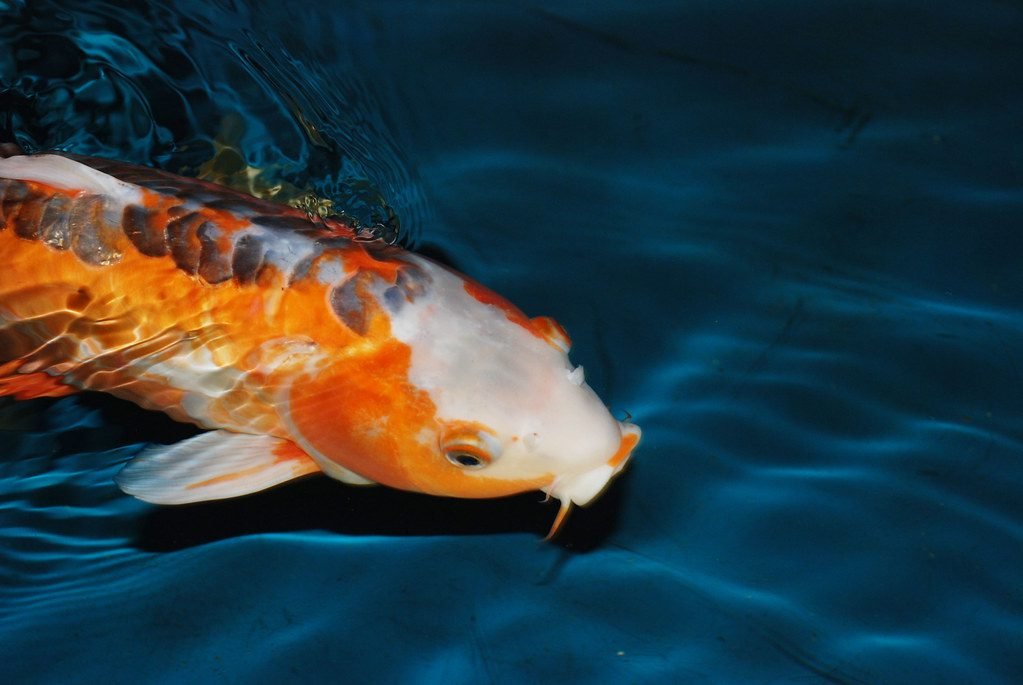

Koi Fish Closeup Shot
Origins and Cultural Significance
Koi, or Nishikigoi as they are known in Japan, are domesticated variants of the common carp. Their cultivation for color began in Japan in the 1820s, and since then, they have become symbolic of Japanese culture.
In addition to their aesthetic appeal, Koi are revered for their ability to overcome adversity, symbolized by their upstream swims in natural settings. This has made them seen as symbols of strength, courage, and resilience, highly esteemed in many cultures.
Characteristics of Koi Fish
- Size: Koi can grow quite large, with some varieties reaching up to three feet long. Their growth is influenced by genetics, diet, and the size of their environment.
- Lifespan: Koi are known for their longevity. With adequate care, these fish can live for several decades, and there are even reports of koi living over a hundred years, making them a long-term commitment for their keepers.
- Behavior: Koi are social, peaceful fish that thrive in groups. They are known for their intelligence, often recognizing their owners, and can also be trained to eat from their hands. Their calm and serene nature makes them ideal for contemplative garden ponds.
- Varieties: There is a wide range of koi varieties, differentiated by their colors, patterns, and scales. Some of the most popular varieties include the Kohaku (white body with red patterns), Sanke (white body with red and black patterns), and Showa (black body with red and white patterns). Each variety has its own unique beauty and is prized for specific characteristics.
The feasibility of keeping Koi fish in tanks
Koi fish are traditionally associated with large, ornamental ponds with ample space to grow, swim, and flourish. This common perception stems from their potential to reach substantial sizes and their need for specific water conditions to remain healthy and vibrant.
Given their size and the complexity of their care, the notion that Koi are best suited for pond life is widespread. However, with appropriate planning and care, keeping koi fish in tanks is not only feasible but can also be rewarding.
Koi as pond fish
Koi are known for their ability to grow large – some varieties can reach lengths of up to 3 feet. Ponds provide the necessary space for this growth and a natural environment supporting their health and well-being. Additionally, ponds can better accommodate the bio-load produced by these large fish, maintaining a stable and healthy ecosystem with minimal intervention.
Koi as tank fish
keeping Koi in tanks is possible and can be successful under the right conditions, for example:
- Space Management: While Koi grow according to their environment, a sufficiently large tank can provide adequate space for younger or smaller koi varieties. Tanks of several hundred gallons are necessary to provide enough room for swimming and growth.
- Water Quality and Filtration: Advanced filtration systems can maintain the high water quality koi require. Regular monitoring and maintenance can ensure that ammonia, nitrite, and nitrate levels stay within safe limits, mimicking the natural balance found in ponds.
- Controlled Environment: Tanks offer more control over the environment, protecting koi from predators and extreme weather conditions. This controlled setting can also facilitate closer observation and interaction, allowing owners to detect and treat health issues more promptly.
- Indoor Viewing Pleasure: For enthusiasts who live in regions with harsh winters or limited outdoor space, tanks make it possible to enjoy Koi’s beauty and serenity year-round within their home’s comforts.
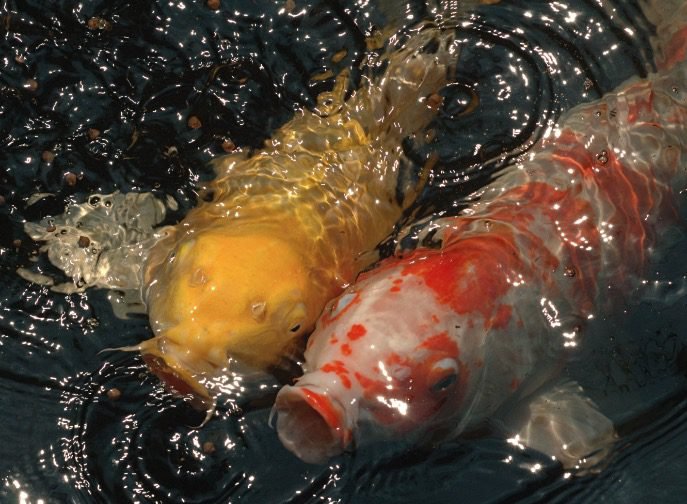

Two Koi Fishes
Requirements for keeping Koi in a tank
Successfully maintaining koi fish in a tank environment demands careful consideration of several critical aspects ranging from tank size and water conditions to diet, nutrition, and overall well-being.
Each element plays a pivotal role in ensuring the health and happiness of these majestic fish when kept indoors.
Tank Size and Conditions
- Tank Volume: A tank ranging from 50 to 150 gallons can initially suffice for young Koi, accommodating approximately 15 young koi at 4 inches each. However, as Koi grows, particularly beyond 6 inches, the need for space increases significantly. For long-term growth, groups of four koi will require at least 400 gallons to thrive and exhibit natural behaviors.
- Temperature Stability: A constant temperature between 65°F and 75°F (18°C to 24°C) is crucial. Unlike pond dwellers, tank-housed koi are less adaptable to abrupt temperature shifts, underscoring the need for a stable, controlled environment.
- Oxygenation: Continuous aeration is non-negotiable, with dissolved oxygen levels maintained at or above 7 mg/L to support koi health and vitality.
- Substrate Choice: Opt for substrates that won’t cloud water, such as clean pebbles or gravel, ensuring a stable and visually appealing tank floor.
- Water Quality: Employ dechlorinated, filtered water, vigilantly monitoring to keep ammonia and nitrate levels at zero.
- Filtration Efficiency: Select a filtration system that suits the tank’s volume and fosters gentle water movement, simulating a more natural habitat.
- Lighting and Cycle: Natural room lighting suffices in well-lit spaces, ensuring koi experience around 8 hours of light and 12 hours of darkness daily. Standard aquarium lighting can replicate this cycle for tanks in dimmer locations, enhancing fish health and tank aesthetics.
- pH Levels: A slightly alkaline range, between 7 and 9, is ideal, supporting koi physiological processes.
- Vegetation: Incorporating plants can enhance the tank’s ecosystem, offering oxygenation benefits and aesthetic value through selected species that won’t become overly invasive or tempting as koi snacks.
- Strategic Tank Placement: Ensure the tank rests on a robust base near a clean water source for ease of maintenance and water changes.
Diet and Nutrition
- Koi require a balanced diet of nutrients to support their growth, color, and health. In a tank setting, high-quality koi food pellets serve as the staple, supplemented with treats like fruits, vegetables, and protein sources for variety.
- Adjust feeding quantities and frequency based on fish size, water temperature, and activity level, mindful to avoid overfeeding and its consequent water quality issues.
Health and Well-being
Common health concerns for koi in tanks include stress, parasitic infections, and water quality-related issues. Preventative measures include:
- Regular water testing.
- Maintaining a clean and well-filtered environment.
- Observing fish behavior for early signs of distress or illness.
Quarantining new fish before introducing them to the main tank can also prevent disease spread.
How many Koi fish can you add to your tank together?
When determining how many koi fish to add to a tank, it’s crucial to consider the tank’s size and the fish’s eventual adult size. A general guideline is to allocate at least 250-300 gallons of water per adult Koi to ensure ample space and maintain a healthy environment.
Therefore, in a spacious 400-gallon tank, you could comfortably house 1-2 adult koi. This recommendation aims to prevent overcrowding, facilitate proper growth, and ensure the sustainability of water quality over time, keeping in mind that koi are large, active fish that require significant room to thrive.
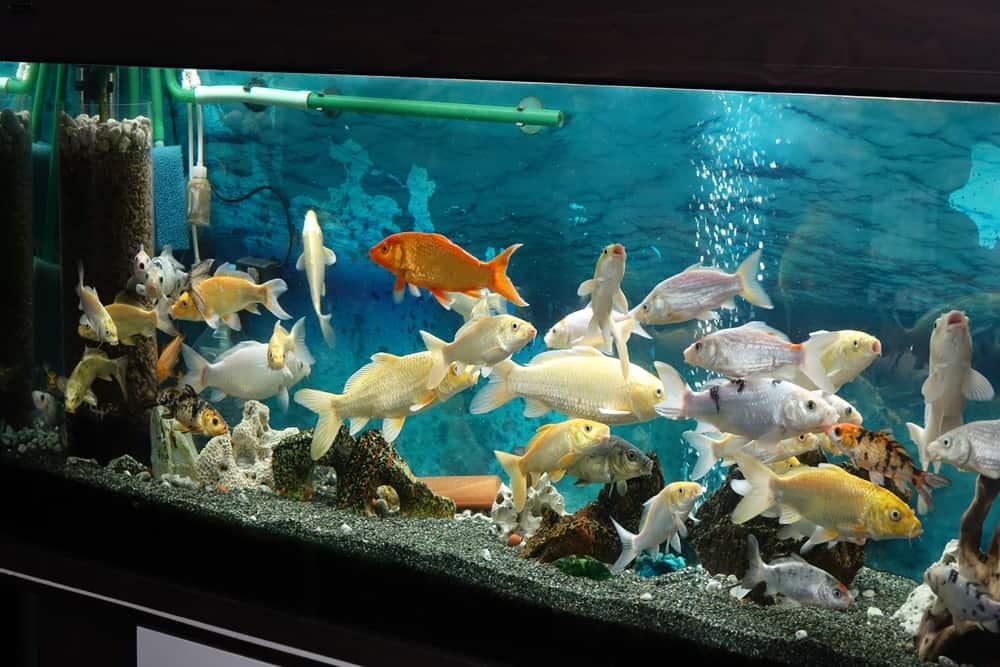

A Lot of Koi Fish in Aquarium
Can you add any other fish to your tank with Koi?
Introducing other fish species to a tank with Koi is possible, but careful consideration is needed to ensure compatibility. Ideal tankmates are peaceful, similarly sized fish that thrive in the same water conditions as Koi. Goldfish are commonly chosen companions due to their similar environmental needs and non-aggressive nature.
However, monitoring the tank’s capacity and maintaining high water quality is crucial, as both koi and their companions produce significant waste. Overstocking can lead to stress and health issues among the fish. Always avoid aggressive species or those small enough to be mistaken for food by Koi to ensure a harmonious tank environment.
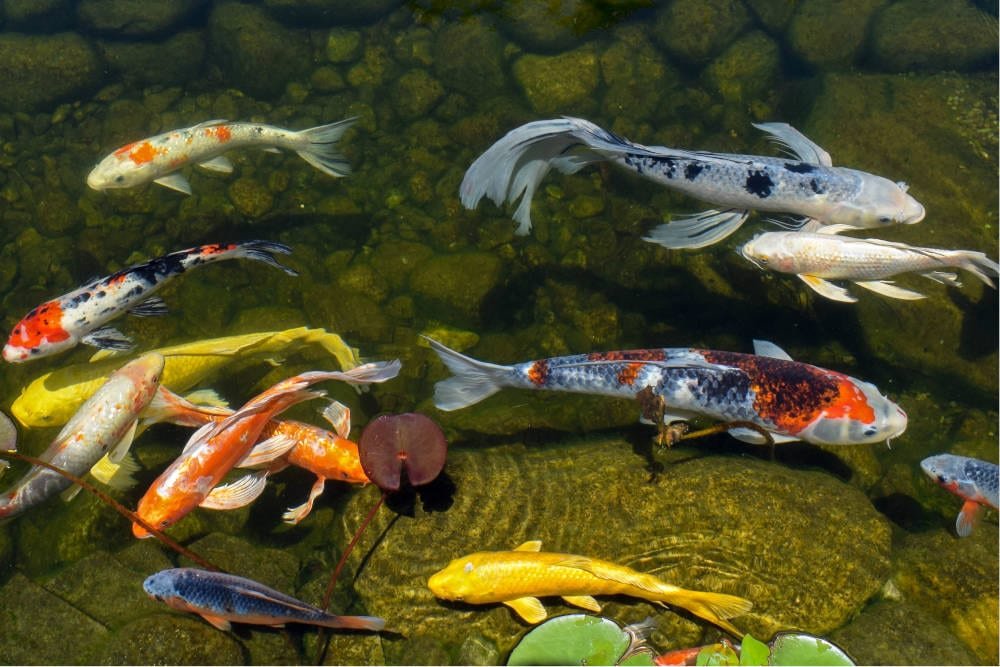

Koi Fish Along with Different Fish
Challenges of keeping Koi in tanks
Keeping koi in tanks involves navigating several challenges to ensure their health and happiness. These challenges include:
- Space Limitations: The growth potential of koi means they quickly outgrow smaller tanks, requiring significant space to accommodate their size and promote healthy development.
- Water Quality Management: Koi produces a lot of waste, demanding constant attention to water quality through regular monitoring and water changes to maintain a clean and safe environment.
- Social Needs: Koi are social animals that thrive in groups; limited tank space can hinder their social interactions and affect their well-being, making it essential to consider their need for companionship within the constraints of an aquarium setting.
Tips for successfully keeping Koi in tanks
Successfully keeping koi in tanks is achievable with careful planning and ongoing care. Here are vital tips to create a thriving environment for your Koi:
- Choose the Right Tank Size: Start with as large a tank as possible, ideally, hundreds of gallons, to accommodate the growth and active nature of koi.
- Invest in High-Quality Filtration: Use a powerful filtration system to handle the significant waste koi produce, ensuring the water remains clean and well-oxygenated.
- Maintain Stable Water Conditions: Regularly test and adjust the water’s pH, temperature, and ammonia levels to keep the environment safe and comfortable for koi.
- Provide Adequate Nutrition: Feed a balanced diet tailored to Koi’s nutritional needs, using varying food types to promote health and vitality.
- Ensure Proper Social Environment: Keep koi in groups to fulfill their social needs, but avoid overcrowding to prevent stress and health issues.
- Perform Regular Water Changes: Conduct frequent water changes to manage nitrates and waste, ensuring the tank’s ecosystem remains balanced.
- Monitor Health Regularly: Keep an eye on your koi for any signs of stress or illness, and be prepared to take action to address any health issues.
Conclusion
In conclusion, keeping koi in tanks is possible with careful consideration of their size, water quality, and social needs. While challenging, koi can thrive indoors with the right tank size, filtration, and care. Before embarking on this journey, weigh the pros and cons to ensure a healthy, happy environment for your koi.
